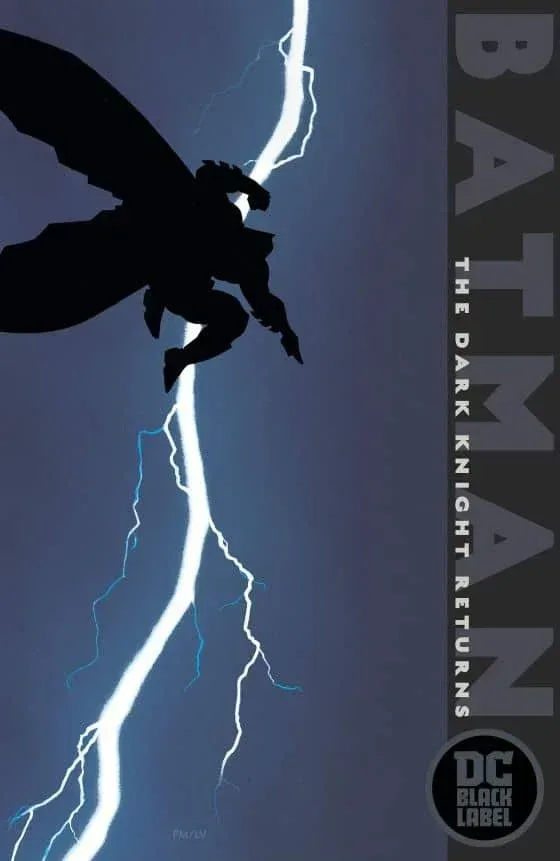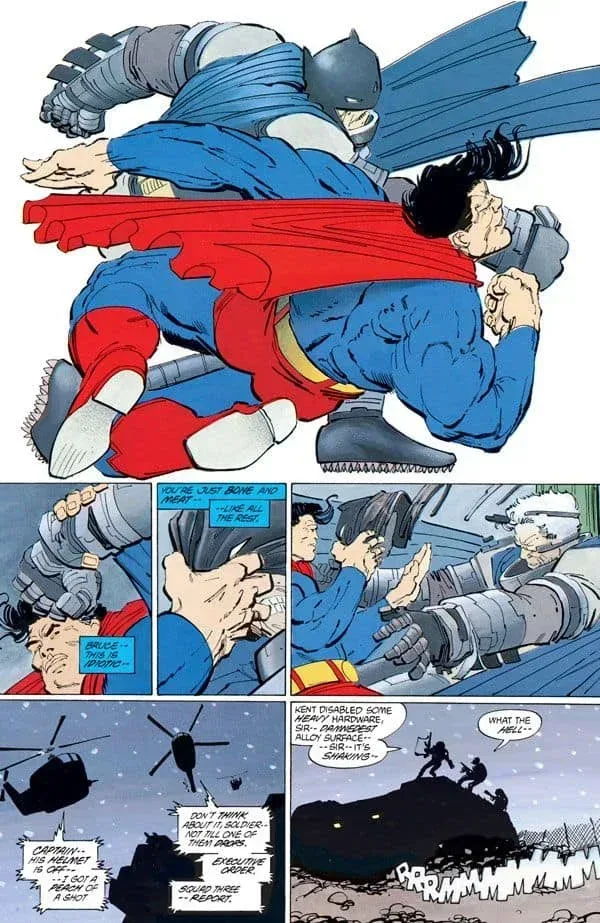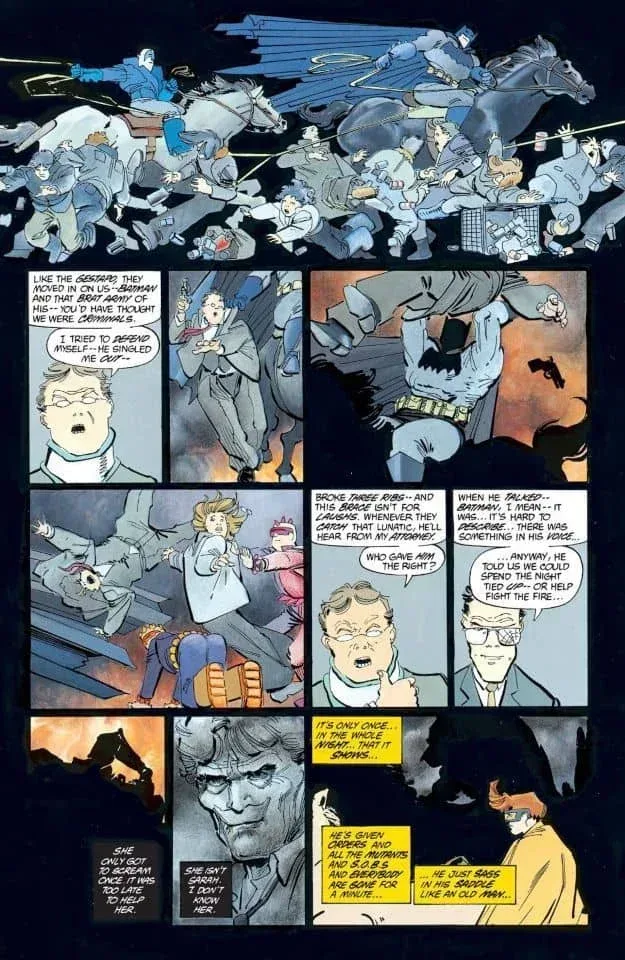
Back in 1986, Frank Miller redefined American superhero comic books with The Dark Knight Returns, a dark reinvention of Batman that launched mainstream American comics into what historians call the Modern Age of Comic Books. The Dark Knight Returns is undoubtedly a masterpiece and one of the best comic books ever written and in today’s article, you are going to find out some additional details about its status in the expansive DC Comics narrative canon.
The Dark Knight Returns is not part of DC’s main narrative cannon (Prime-Earth), as it takes place on Earth-31 and was even – retroactively though – labeled as an Elseworlds story, although it was initially not part of that exact imprint.
In today’s article, you are going to find out whether The Dark Knight Returns is part of DC’s primary narrative canon or not. You are also going to find out whether it is a standalone story or part of a larger narrative series that includes prequels, sequels, spin-offs, and whatever else you might think of. Enjoy!
Is The Dark Knight series canon?
Frank Miller’s epic masterpiece that redefined Batman and modern American superhero comics began publication in February 1986 and ended in June of that same year. It was a limited series published in four issues, later collected in one single volume.
The Dark Knight Rises follows a 55-year old Bruce Wayne who comes out of retirement and becomes Batman once more so he can fight the Mutants in a dystopian and hope-ridden Gotham City. The plot is set in 1986 but portrays an alternative present (from that perspective), which – of course – raised a lot of questions.
Now, The Dark Knight Returns was a mainstream title back in the day, but it just didn’t fit the main canon narrative of the time, nor does it fit it from today’s perspective. So, is The Dark Knight Returns canon?
That question wasn’t answered at the time. At the time, the canon wasn’t all that firm as it is now and narratives were far more fluid and flexible. So, at the time, the canon status of Miller’s masterpiece wasn’t all that relevant in the first place. It was a mainstream comic and people perceived it like that, despite the chronological inconsistencies.
So, what changed? Well, DC Comics started to establish its Multiverse more firmly after the 1985/1986 Crisis on Infinite Earths crossover events, which was continued through the 1990s. The Dark Knight Returns came out around the time when DC Comics was still working on its narrative canon, so it wasn’t really that much of a problem at the time.
Later on, though, a need arose to define the place of Miller’s story within a now-established narrative canon. Of course, the editors couldn’t really put it on Prime-Earth, as it didn’t fit the Prime-Earth narrative, so they decided to find a new spot for it.
Retroactively, The Dark Knight Returns was labeled as an “Elseworlds” story and placed on Earth-31, which permanently defined its canon status or, to be more precise, placed it outside DC’s main narrative canon of Prime-Earth and defining the story as an alternative take on the Batman mythos. I am not sure whether that was Miller’s original plan, but if you look at the big picture – it’s the only decision that makes sense.

Are there prequels, sequels, and spin-offs to The Dark Knight Returns?
Although The Dark Knight Returns started off as a four-issue limited series, the narrative was soon expanded and the Earth-31 setting came back for several other stories. So, to answer the question from the title – yes, there are prequels and sequels to The Dark Knight Returns. Let us see what they are.
Fifteen years after the original story, Frank Miller released The Dark Knight Strikes Again, the long-awaited sequel to his original comic book that followed Batman’s new adventures and expanded the universe of Earth-31 with new characters and locations. The back cover of the comic book summarized its plot as follows:
“Still, the world looks fine: a perfectly choreographed, pretty little world where everything that’s ugly, or even potentially disturbing, is all nicely wrapped up with neat little ribbons and swept under the carpet. Only Batman knows better. He’s watched it fester to near-breaking point, and it’s time for the only free man left who can effect any real change to bring it all down around their ears once and for all.
The Dark Knight returns once again with a vitality unseen since the first years of his war on crime. Together with his army of Bat-soldiers, including Carrie Kelley—formerly Robin, and now the new Catgirl—the Dark Knight wages a new war on a diseased world that’s become completely lost.”
It took an additional fourteen years for a third installment in the series to begin publication, as Miller, co-writing with Brian Azzarello, released The Dark Knight III: The Master Race, a second sequel to the original comic book, which further expanded the universe of Earth-31. The official synopsis is as follows:
“It’s been three years since the Batman defeated Lex Luthor and saved the world from tyranny. Three years since anyone has seen Gotham City’s guardian alive. Wonder Woman, Queen of the Amazons…Hal Jordan, the Green Lantern…Superman, the Man of Steel…all of The Dark Knight’s allies have retreated from the front lines of the war against injustice.
But now a new war is beginning. An army of unimaginable power led by Superman’s own daughter is preparing to claim Earth as their new world.
The only force that can stop this master race—Batman—is dead.
Long live the new Batman…”
A prequel, The Dark Knight Returns: The Last Crusade, also written by Miller and Azzarello, was released in 2016, chronicling the events that lead into Miller’s original 1986 storyline. The official summary is as follows:
“As the Joker is manically returned to Arkham Asylum, Bruce Wayne is struggling to train his sidekick and heir apparent, the new Robin, Jason Todd. While a new string of bizarre killing sprees involving Gotham City’s elite take up Batman and Robin’s attention, critics begin to question if the Dark Knight has a right to endanger the life of a child. What does night after night of danger and brutality do to a child? And what is the Joker planning?”
Finally, in 2019, Frank Miller also released The Dark Knight Returns: The Golden Child, a prestigious one-shot that serves as the fourth chapter in the series, although it’s more of a short story than a full-fledged narrative. It is set after the events of The Master Race. DC Comics summarized it like this, and with this synopsis, I bring this section of the article to a close:
“It’s been three years since the events of Dark Knight III: The Master Race. Lara has spent the time learning to be more human, and Carrie Kelley has been growing into her new role as Batwoman. But a terrifying evil has returned to Gotham City, and Lara and Carrie must team up to stop this growing threat–and they have a secret weapon. Young Jonathan Kent, “the golden child,” has a power inside of him unlike anything the world has ever seen, and it’s about to be unleashed…”
Is Batman: Year One connected to The Dark Knight Returns?
Now, knowing Frank Miller’s opus, as well as the fact that he was a major contributor to DC Comics during the 1980s, one cannot but wonder whether another of Miller’s major works written during this period, Batman: Year One. DC Comics summarized the story and its importance as follows (taken from the back cover of the 2007 edition):
“In 1986, Frank Miller and David Mazzucchelli produced this groundbreaking reinterpretation of the origin of Batman—who he is, and how he came to be. Sometimes careless and naive, this Dark Knight is far from the flawless vigilante he is today.
In his first year on the job, Batman feels his way around a Gotham City far darker than the one he left. His solemn vow to extinguish the town’s criminal element is only half the battle; along with Lieutenant James Gordon, the Dark Knight must also fight a police force more corrupt than the scum in the streets.”

As you can see, DC Comics clearly defined the historical importance of this 1987 narrative and indeed, Year One is today considered to be a seminal work in the development of the Batman mythos, a work that has defined the beginning of Batman’s career for all future writers. Now, seeing how the story was written in 1987 and by the same author as The Dark Knight Rises, is it part of the same continuity?
It is not! Namely, despite the publication date and the author, Batman: Year One is set in a completely different universe. In fact, until 2011, Batman: Year One was considered to be part of the main canon (then called New Earth), completely separate from The Dark Knight saga. During the New 52, it was replaced by Zero Year as Batman’s new origin story and moved to New Earth, which was replaced by Prime Earth as the main setting of DC’s stories.
